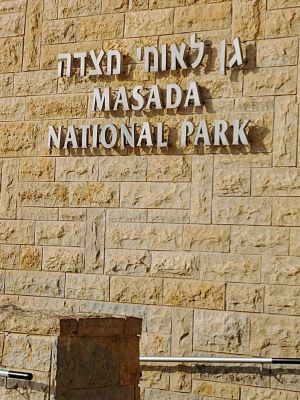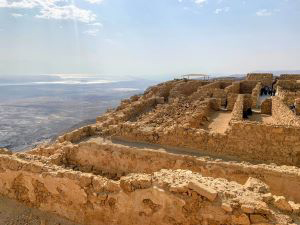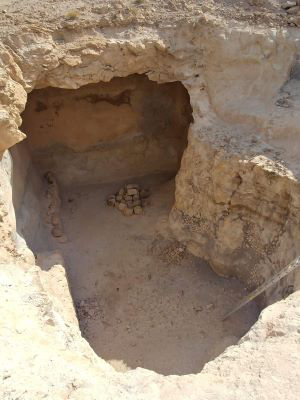
A tour of the western shore of the Dead Sea brings travelers across a highway that runs hundreds of meters below sea level. While tracking north, the salt-lake lay still and to the right. Over the surface of the Dead Sea, it’s easy to see the wastelands and rocky terraces of the Wadi Desert. To the left, travelers will see rocky plateaus, which then leads to a famous National Park, Masada.
Masada sits on the western edge of the Dead Sea, between its northern basin and its southern basin. The bus for Amiron Travel took us across Highway 90 that was once below sea level. Across Ein Bokek, with the southern basin of the sea to our right, we had mountains to our left that looked over the sea.
At the park
When our bus arrived at the Masada National Park, we saw a high rocky plateau that overlooked the Dead Sea. Different historical figures employed this fortress through the epochs of history.
Masada’s geography must have been strategic for the Hasmoneans that would have used it between 103 and 76 BCE. For King Herod, who used it between 37 and 4 BCE, the location amidst the desert was ideal for a ruler that would isolate himself from all possible enemies.
Masada looked over the Dead Sea, now 475 meters above the surface of the sea. This massive fortress towers over the sediment of the Dead Sea and sits across three cascading terraces. The Hasmoneans manufactured these terraces with the intent to support their architecture.

We walked into the eastern entrance we stumbled across ancient artifacts which were pieces of Masada’s history. The exhibit showcased pottery and coins that were on the mountain during the Herodian Period and the Byzantine Period.
We stared at the mountain. A long stairway snaked along the large mass towards the summit. This stairway is an alternative path. People say that the walk would take an hour and thirty minutes to ascend, and forty-five minutes to descend.
Once we got to the top, we stared over the expanse. The ancient builders fortified this area with walls that stood more than six feet in height. We stood over the structural remains of these walls. The builders hewed these out of the same rocks on which we stood. This entire fortress told a story.
The Hasmonean era said little due to a lack of archeological evidence. The structural remains tell much of the character of the one that fashioned this fortress.
King Herod
We trod through the dusted path of the Northern Palace and elongated rooms without ceilings. Rocks and boulders filled the space of one. They were all adjacent, for our guide told us that we were walking through the storeroom complex.
The builders constructed the rooms in such a way that they could preserve foods for lengths of time. The ancient historian, Josephus Flavius, tells of the storerooms the Sicarii found during the Jewish Revolt.
“For here had been stored a mass of corn, amply sufficient to last for years, abundance of wine, and oil, beside every variety of pulse and piles and dates.”–Josephus Flavius, The Wars of the Jews, VII, 297

We walked further to the most northern point of Herod’s Palace, where a semicircular balcony looked over the plains which stretched for miles. It overlooked a middle and lower terrace.
A clear visual of the open would allow inhabitants of the palace to see for miles. Hundreds of feet below, and all around, there were rows of what were walls. Herod would have fortified the whole parameters of the mountain.
Further out were more structural remains. Our guide told us that these were garrisons that the Romans built after the time of King Herod. The walls around a remote palace tell us that Herod was in constant fear for his life.
Yuval told our group about Herod’s marriage to Mariamne, the niece of the last Hasmonean ruler, Antigonus II Mattathias.
As we continued through the ancient landmark, we passed a cadre of youth. While one told us about the events during Herod’s rule, five or more teenagers wearing stage props acted out the scene. The thing that stood out most was the girl that wore a red cape and crown. Yuval pointed out that she was playing Herod’s wife, Mariamne. The timing couldn’t have been better.
We entered an enclosed part of the Northern Palace that housed uniquely designed rooms. The builders layered the floors with a marble finish. The columns under lost portions of the floor were exposed for visitors to see. Preserved, though partially lost to the sands of time, were walls made of frescos.
Our guide told us that Herod used this building as a bathhouse for his guests. The design typified a Hellenized culture. Herod knew that bathhouses were integral to Roman culture. He had these constructed for his Roman guests.
The Jewish Revolt
During the Great Revolt, Masada was a stronghold for a band of rebels called the Sicarii. When the Siege of the fortress took place under Vespasian and Titus in 73 and 74 CE, the occupants, including women and children, were cornered. In The Wars of the Jews,the rebel leader, Eleazar ben Yair, convinced the leaders and 960 members of the community to take their own lives.
Eleazar claimed that death is preferable to slavery by the Romans. When the Romans breached the fortress, they found the dead. The remaining survivors were two women and five children. The Romans found them hiding in cisterns.

Yuval led us to one of the water cisterns. This reservoir was at a lower level and was open and large enough to hold more than twenty adult men. During the time of the siege, these cisterns would have had top covers that were enough to hide two women and five children from the others.
The Monks
We left the Northern Palace and walked out into the open space. The look of the clearing made us feel like we were on the ground level. Such wasn’t the case, for we were still on the summit.
We had to return to the cable cars. One glance to our right and sitting between us and the Western gate were the remains of a free-standing structure forged out of the same rock that we stood on. This building was a Byzantine church.
Centuries after the fall of Jerusalem, the Byzantines had annexed that territory. In the fifth century CE, Lavra monks came to Masada.
They chose this summit, which was in the middle of the desert, to create their community. On this deserted mountain, the Lavras (or Lauras) built a church. When the followers of Islam gained control and overran the entire region, the monks abandoned Masada.
The Abandoned Mountain
We left Masada, then tracked north. We stopped by the mountains of En-Gedi. That was when we ascended the walk towards the foot of the hill.
After more than ten centuries of being entirely vacant, the American biblical scholar Edward Robinson rediscovered the site in 1838. Robinson stood from the En-Gedi when he captured a glimpse of the mountain. It wasn’t until 1963 that a mission under Yigael Yadin to excavate Masada began.
When the Canadian visitors aboard the Amiron Travel tour bus came to the site in the year 2020, they knew they were standing on a mountain of ghosts. ~TPM
About Gary James—Gary is a new travel writer. He has recently returned from the Holy Land, not long before the growing news trends involving COVID 19. While at home, Gary is a social worker and lover of all things to do with history. He hopes for more travel after the global epidemic dies down. He plans to visit more historical landmarks and be a part of these past events.
